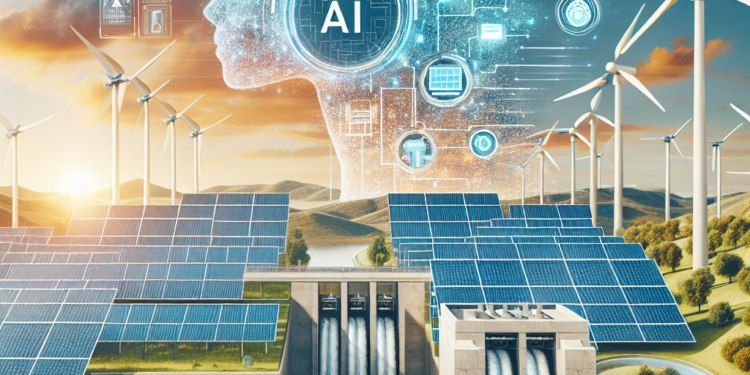Renewable energy sources, such as solar, wind, and hydropower, are becoming increasingly popular as the world looks for ways to reduce dependence on fossil fuels and combat climate change. However, the intermittent nature of these sources presents challenges in terms of reliability and efficiency. This is where artificial intelligence (AI) comes in. By using AI to optimize renewable energy solutions, we can overcome these challenges and further accelerate the transition to a clean energy future.
AI technology has advanced rapidly in recent years, allowing for more sophisticated modeling and prediction of energy production from renewable sources. This can help utilities and energy companies better plan for fluctuations in supply and demand, ensuring a more stable and efficient grid. For example, AI algorithms can analyze weather patterns to predict when and where solar or wind power will be most abundant, allowing for better integration of these sources into the grid.
One of the key ways AI is enhancing renewable energy solutions is through the development of smart grids. Smart grids use AI algorithms to monitor and control the flow of energy in real-time, adjusting production and consumption levels to match supply and demand. This can help reduce energy waste and costs, as well as improve the overall reliability and resilience of the grid.
Another way AI is improving renewable energy solutions is through the optimization of energy storage systems. Energy storage is crucial for maintaining a steady supply of renewable energy, especially when the sun isn’t shining or the wind isn’t blowing. AI can help optimize the operation of batteries and other storage technologies, ensuring that energy is stored and distributed efficiently.
AI can also help improve the efficiency of renewable energy production itself. For example, AI algorithms can analyze data from solar panels or wind turbines to identify maintenance needs or performance issues, allowing for proactive maintenance and longer equipment lifespan. This can help reduce downtime and costs associated with maintenance, as well as improve overall energy production.
Furthermore, AI can help optimize the design and placement of renewable energy systems. By using sophisticated modeling and simulation tools, engineers can determine the most efficient configuration for solar panels or wind turbines based on factors such as sunlight exposure, wind patterns, and terrain. This can help maximize energy production and reduce the overall cost of renewable energy installations.
In addition to improving the efficiency and reliability of renewable energy solutions, AI can also help reduce their environmental impact. By optimizing energy production and consumption, AI can help reduce greenhouse gas emissions and other pollutants associated with traditional energy sources. This can help combat climate change and improve air quality, leading to a healthier and more sustainable future for all.
Overall, the integration of AI into renewable energy solutions holds great promise for accelerating the transition to a clean energy future. By optimizing energy production, storage, and distribution, AI can help overcome the challenges of intermittency and reliability that have hindered the widespread adoption of renewable energy sources. With continued advancements in AI technology and increased investment in renewable energy infrastructure, we can build a more sustainable and resilient energy system for generations to come.













